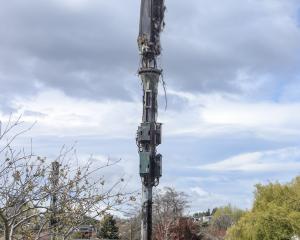A reduced number of skiing and snowboarding ACC accident claims registered in the Queenstown Lakes District this year is being attributed to fewer visitor numbers and extra safety initiatives implemented at skifields.
As of October 25, statistics published by ACC recorded 4385 claims following skiing and snowboarding accidents compared with 5422 claims registered in the district last year.
Cardrona Alpine Resort general manager Bridget Legnavsky said the drop in claims this year could be due in part to the reduced visitor numbers.
There were only 1.7 million ski days in New Zealand this year compared to 1.9 million ski days in 2018.
However, she said Cardrona had put "a lot of work" into safety systems and controlling different user groups on the slopes.
A new department for slope safety had been created which involved a team monitoring the behaviour of skiers and snowboarders, but "it was not that easy", she said.
"We have a lot of different cultures at Cardrona and what is `in control' for some cultures is different for others", she said.
Snow Sports NZ (SSNZ), the organisation representing the country's high-performance winter athletes in adaptive snowsports, alpine ski racing, cross-country skiing, freeskiing and snowboarding, said it was regularly improving its health and safety systems.
For instance, before a new trick was attempted on snow an progressive approach was used, SSNZ communications manager Alex Kerr said.
An athlete would first master the movements and landings on a trampoline and then on "the air bag" - a 65-metre-long, 26m-wide and 3m-high safety apparatus set up on the snow at Cardrona, she said.
"It allows athletes to learn tricks and aerial skills taking off from a jump and landing on an air platform, if the landing is successful it allows the athlete to ride out of the landing, or if they get it wrong, it allows them to land on a soft pillow that prevents major injury."
Injuries and rehabilitation were managed by key support staff and they followed stringent "return-to-snow" protocols, Ms Kerr said.
SSNZ was also developing a health and safety app to ensure staff and athletes' safety in all aspects of their work.
This involved assessment of weather and snow conditions and safety checks on vehicles before driving on mountain roads, she said.
ACC statistics reported "soft tissue injuries" made up the largest number of primary injury diagnoses in any year between 2013 and 2019.
There were 8,712 registered this year and 12,355 in 2018.














